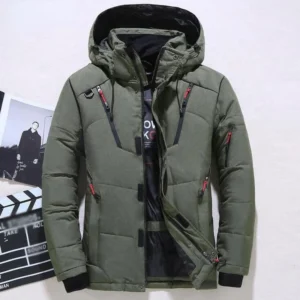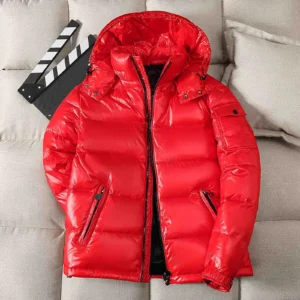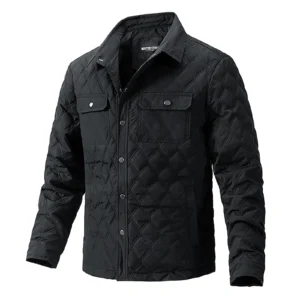What Makes a True Shearling Jacket?
A true shearling jacket is made from genuine sheepskin with the wool left intact. Unlike synthetic alternatives, authentic shearling consists of a single material that has been specially processed. The hide is tanned with the wool still attached, creating a material that naturally has leather on one side and soft, insulating wool on the other.
This natural construction is what gives shearling its exceptional properties. The leather exterior provides protection from wind and moisture, while the wool interior creates remarkable insulation. Understanding the defining characteristics of a classic shearling jacket helps distinguish quality pieces from imitations.
What truly sets shearling apart is its temperature regulation capability. The wool fibers trap warm air close to the body while simultaneously wicking moisture away from the skin. This creates a microclimate that keeps you warm in cold weather but prevents overheating. These natural properties of quality shearling make it vastly superior to synthetic alternatives that might look similar but lack the performance.
The tactile experience of shearling is unmistakable. Premium shearling offers a supple leather exterior that becomes more flexible over time, while the wool interior remains plush and soft against the skin. Understanding the differences between shearling and sheepskin is essential when evaluating jacket quality – while related, they have distinct characteristics that affect performance and comfort.
The Rich Heritage of Men’s Shearling Jackets
The story of shearling jackets begins with pure functionality. During World War II, bomber crews flying in unpressurized aircraft at high altitudes faced extreme cold. The military developed the B-3 bomber jacket from sheepskin to protect pilots in these harsh conditions, where temperatures could plummet well below freezing.
These military-issue jackets featured oversized collars that could be turned up against the wind, roomy cuts for movement, and secure closures to seal out drafts. The practical design elements weren’t about style—they were about survival. The history of aviator shearling jackets reveals how function drove design choices that would later become iconic style features.
After the war, military surplus made these jackets available to civilians, and Hollywood solidified their place in fashion history. When Marlon Brando donned a shearling coat in “On the Waterfront” and James Dean showcased similar styles, they transformed from military gear to symbols of rugged masculinity and rebellion.
Over the decades, shearling crossed the boundary from purely functional outerwear to luxury fashion item. Top designers began creating their interpretations of these jackets, maintaining core elements while adding refined touches. Despite fashion’s cyclical nature, shearling jackets have never truly gone out of style, experiencing periodic revivals but remaining a constant symbol of enduring style.
Iconic Styles: Classic Men’s Shearling Jacket Types
The world of men’s shearling jackets offers several distinct styles, each with its own heritage and design characteristics. Understanding these popular shearling jacket styles helps in choosing one that suits your personal aesthetic and practical needs.
B-3 Bomber: The original military design features an oversized shearling collar that can be turned up for face and neck protection. Traditional B-3s have a roomy fit to accommodate layers underneath and typically end at the waist with a snug band. Authentic versions showcase substantial shearling throughout with heavy-duty front closures.
Aviator/Flight Jacket: A close cousin to the bomber, aviator styles typically feature a large collar and full shearling lining. They often include additional design elements like chest pockets, epaulets, or sleeve details that reference their military heritage while maintaining a streamlined silhouette.
Shearling Car Coat/Overcoat: These longer styles extend to the thigh or knee, offering additional coverage for more formal settings. Often designed with cleaner lines than bomber styles, car coats typically feature straight cuts, traditional collars, and concealed closures. Their versatility makes them suitable for business and formal occasions.
Shearling Trucker: These shorter jackets feature button fronts, dual chest pockets, and a more casual silhouette. Perfect for everyday wear, trucker styles often showcase shearling at the collar while using it as lining throughout the rest of the jacket.
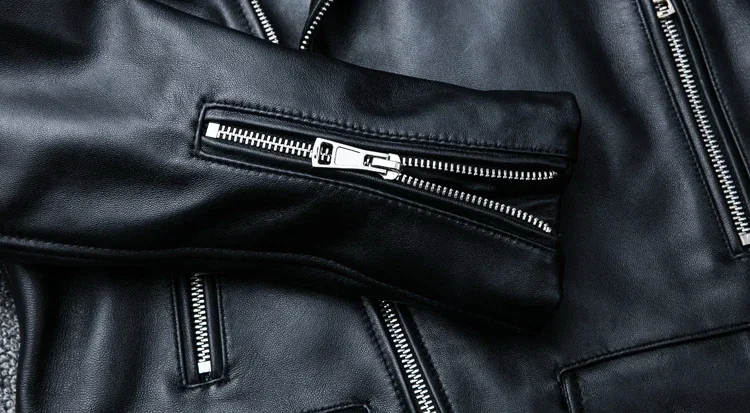
Shearling Biker/Moto: Distinguished by asymmetrical zippers, snapped lapels, and a fitted silhouette, these jackets blend edge with warmth. They often feature strategic shearling placement at collars and cuffs while maintaining the sleek lines associated with traditional motorcycle jackets.
Hooded Shearling: Merging practical weather protection with luxurious comfort, hooded styles incorporate shearling-lined hoods for additional warmth and weather protection. These jackets often balance rugged outdoor functionality with refined urban styling.
Exploring our collection of men’s shearling coats and leather shearling coats reveals how these classic designs have been thoughtfully updated for the modern man while retaining their heritage appeal.
Quality Indicators: How to Identify Premium Shearling
Identifying authentic, high-quality shearling requires attention to several key factors. First, genuine shearling has a distinctive feel that’s difficult to replicate – the leather side should be supple yet substantial, while the wool side should have consistent density with resilient fibers that spring back when compressed.
Different types of sheepskin offer varying characteristics. Merino shearling provides finer, denser wool with excellent insulation. Toscana shearling features longer, silkier fibers that create a distinctive flowing appearance. Icelandic sheepskin offers thicker, more robust wool ideal for extreme weather protection. Each has its place in quality sheepskin coat construction, depending on the intended use and style.
When examining the leather exterior, look for even coloration with a natural variation rather than a perfectly uniform appearance. Premium shearling leather should feel substantial but remain flexible. Minor natural markings indicate authenticity, while excessive blemishes might suggest inferior selection or processing.
Quality construction becomes evident in the details. Examine the stitching – it should be tight, even, and reinforced at stress points. Seams should lie flat without puckering, and panel matching should be precise, particularly where the leather grain or wool density is concerned.
Hardware represents another critical quality indicator. Zippers should operate smoothly with sturdy teeth and pulls. Buttons should be securely attached with reinforced backing. Buckles or other metal elements should have weight and substance rather than feeling hollow or flimsy.
Perhaps counterintuitively, authentic shearling jackets have significant weight. The natural density of properly processed sheepskin creates a garment with noticeable heft – if a jacket feels unusually light for its size, it may contain synthetic materials or inferior processing.
The Investment Value of a Classic Shearling Jacket
Purchasing a premium shearling jacket represents a significant upfront investment, but understanding the long-term value helps put this cost in perspective. Unlike seasonal fashion items that quickly become dated, a classic shearling jacket can remain stylish and functional for decades when properly maintained.
The exceptional performance of genuine shearling creates value beyond aesthetics. Its superior warmth-to-weight ratio means you stay comfortably warm without the bulk and weight of synthetic alternatives. This natural insulation works efficiently across a wide temperature range, making your classic shearling jacket versatile throughout changing seasons and weather conditions.
Durability represents another key investment factor. Quality shearling jackets commonly last 10-20 years or more with proper care. This longevity dramatically reduces the cost-per-wear calculation compared to cheaper alternatives that might need replacement every few seasons.
Beyond pure practicality, shearling offers benefits that synthetic materials simply cannot match:
- Natural breathability that prevents overheating
- Moisture-wicking properties that keep you dry
- Static-free comfort unlike many synthetic materials
- Hypoallergenic qualities beneficial for sensitive skin
- Development of unique character and patina over time
When calculating true value, consider the initial cost spread across years of use versus the repeated expense of replacing lower-quality alternatives. A premium shearling jacket costing $1,500 worn regularly for 15 years equals $100 per year or about $8.33 per month—comparable to fast-fashion alternatives that might last only a single season.
Finding Your Perfect Fit: Sizing and Silhouette Guide
Selecting the right fit for a shearling jacket requires special considerations beyond those for typical outerwear. The substantial nature of shearling means proper sizing is essential for both comfort and appearance.
When measuring for a shearling jacket, allow slightly more room than you might for a standard leather jacket. The wool interior creates additional thickness that affects the overall fit. Key measurement points include:
- Shoulders: The seam should sit at or just slightly beyond your natural shoulder edge
- Chest: Measure at the fullest point and add 2-3 inches for comfortable movement
- Sleeve length: Should reach your wrist bone when arms are relaxed at sides
- Body length: Varies by style, but should align with the intended silhouette
Different styles demand different fit considerations. Bomber jackets should fit closer to the body with enough room for a light sweater underneath. Car coats and overcoats require more generous proportions to accommodate suits or heavier layers. Understanding the appropriate coat length for your body type ensures the most flattering silhouette.
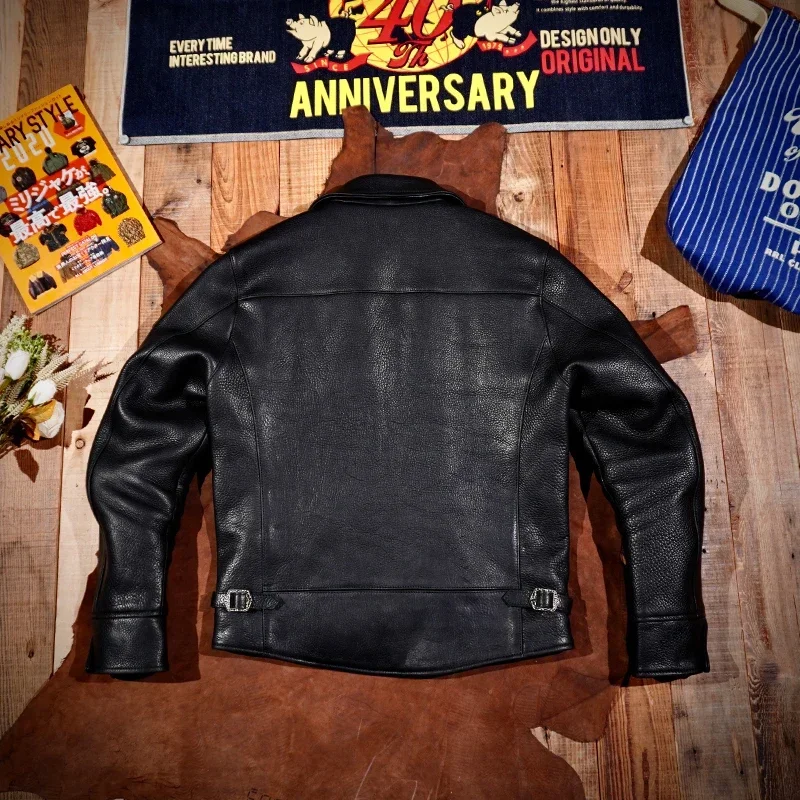
When shopping online, pay special attention to sizing charts and measure yourself carefully. Remember that brands may size differently, especially those from different regions. Look for adjustable features like side tabs, buckle straps, or adjustable cuffs that can fine-tune the fit.
The perfect fit should allow comfortable movement without restriction. You should be able to cross your arms comfortably and raise them above your head. The jacket should close easily without pulling or gapping. Remember that genuine shearling will slightly conform to your body over time, creating an increasingly personalized fit.
Styling Your Shearling: From Casual to Sophisticated
A classic shearling jacket offers remarkable versatility across different dress codes and occasions. Mastering various styling approaches maximizes your investment by creating multiple outfit possibilities.
For casual everyday wear, the pairing of shearling jackets with jeans creates an effortless look with rugged appeal. Consider dark wash denim for a cleaner appearance or distressed styles for more relaxed settings. Complete the look with simple t-shirts or lightweight sweaters and boots or sneakers depending on the season.
Elevating to smart casual requires thoughtful combinations. Try:
– Wool trousers with a bomber-style shearling jacket
– A fine-gauge turtleneck under a shearling car coat
– Chelsea boots paired with tapered pants and an aviator jacket
– Textured accessories like knit scarves that complement the natural texture of shearling
For business settings, longer car coat or overcoat styles in darker colors provide appropriate sophistication. These work well over suits or business casual attire, offering warmth without sacrificing professionalism.
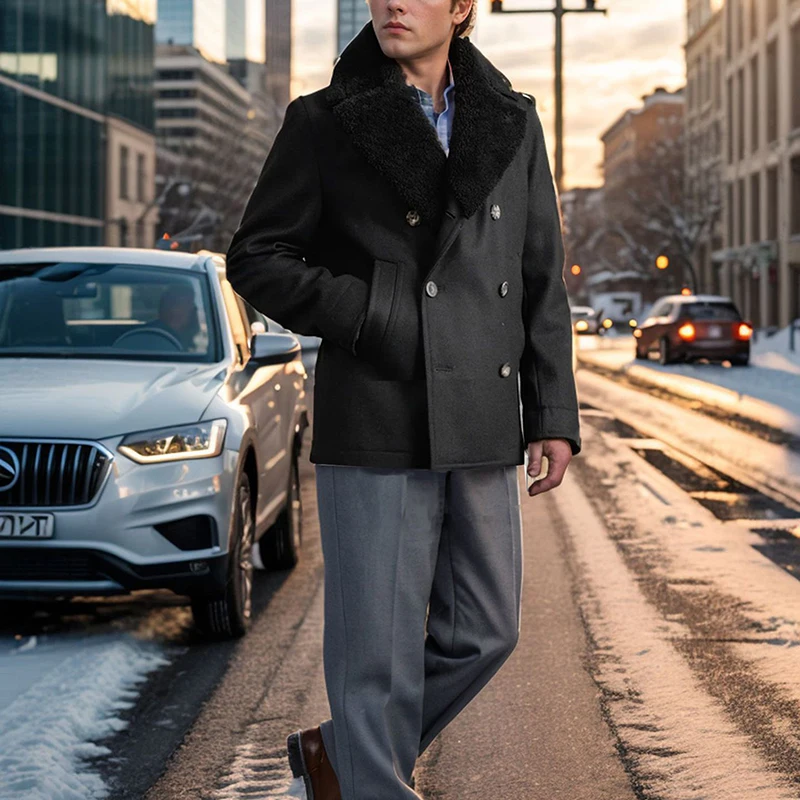
Color coordination deserves special attention with shearling. Most jackets come in natural tones like tan, brown, black, or cognac. These neutral colors pair easily with most wardrobes but consider these principles:
– Brown shearling harmonizes beautifully with earth tones and forest greens
– Black shearling creates striking contrast with lighter colors
– Tan or cognac jackets pair wonderfully with navy, burgundy, and deep greens
The comprehensive styling guide for shearling jackets shows that thoughtful layering enhances both comfort and style. In transitional weather, lighter layers underneath allow versatility as temperatures change throughout the day. During colder seasons, strategic layering with thinner, warm fabrics prevents bulk while maximizing insulation.
Proper Care: Maintaining Your Shearling Investment
Preserving your shearling jacket’s beauty and functionality requires specific care practices that differ from regular leather or fabric garments. Following these guidelines significantly extends your jacket’s lifespan.
For regular maintenance, gentle brushing of the wool interior with a soft-bristled brush removes dust and restores loft. The leather exterior benefits from occasional buffing with a soft cloth to remove surface dust. Hanging your jacket on a broad, padded hanger between wears prevents stretching and maintains the proper shape.
When spot cleaning becomes necessary, address spills immediately. For the leather side, gently blot (never rub) moisture with an absorbent cloth. For minor stains on either surface, specialized shearling cleaner applied according to product instructions works best. Always test cleaning products on an inconspicuous area first.
Professional cleaning is recommended for significant soiling or approximately every 2-3 years with regular wear. Seek specialists experienced with genuine shearling rather than standard dry cleaners who might not use appropriate techniques for this unique material.
Proper leather coat care and maintenance also includes moisture management. If your jacket gets caught in rain, allow it to dry naturally at room temperature away from direct heat sources. Once dry, the leather may benefit from a specialized conditioning treatment to restore moisture lost during drying.
Storage requires particular attention to prevent damage. Always ensure your jacket is completely clean and dry before storing for extended periods. Use a breathable garment bag rather than plastic, which can trap moisture. Store in a cool, dry place away from direct sunlight, which can fade the leather and damage the wool.
Common mistakes to avoid include:
– Using standard leather cleaners not formulated for shearling
– Exposing to prolonged direct sunlight
– Storing in plastic or compressed conditions
– Using high heat for drying or attempting to iron
– Applying non-specialized waterproofing treatments
Premium Brands: Where to Find Quality Men’s Shearling
The market for men’s shearling jackets spans various segments, each offering different benefits depending on your priorities and budget. Understanding these categories helps when purchasing the right shearling coat.
Heritage brands focus on authentic reproductions of classic designs, often using traditional manufacturing techniques. These companies typically have decades of experience working with shearling and emphasize historical accuracy alongside quality materials. Their jackets often feature robust construction designed for genuine performance in harsh conditions, just like their original counterparts.
Contemporary premium brands blend traditional craftsmanship with modern interpretations. These makers update classic silhouettes with current proportions, refined details, and sometimes innovative technical features. While respecting shearling’s heritage, they create pieces that feel relevant to today’s aesthetic sensibilities.
Luxury fashion houses offer high-end shearling pieces that emphasize design distinction and exclusive materials. These garments often showcase unique details, unusual treatments, or fashion-forward silhouettes. The focus typically balances craftsmanship with design innovation and brand prestige.
When evaluating brands across these segments, consider these quality markers:
– Material sourcing transparency
– Craftsmanship details provided in product descriptions
– Construction techniques and country of manufacture
– Brand history and specialization with shearling
– Warranty offerings and repair services
Price ranges vary significantly across market segments. Entry-level quality shearling jackets typically start around $800-1,000. Mid-range premium offerings generally fall between $1,200-2,500. Luxury designer pieces commonly exceed $3,000, with high-end offerings reaching $10,000 or more.
Weather Considerations: When to Wear Your Shearling
Understanding when to wear your shearling jacket maximizes both comfort and protection of your investment. Shearling performs best in specific temperature ranges and weather conditions, with slight variations depending on the jacket’s weight and style.
Most shearling jackets provide optimal comfort in temperatures between 15°F and 40°F (-9°C and 4°C). Lighter styles with thinner shearling work well in the upper part of this range and during transitional seasons. Heavier jackets with denser wool excel in colder conditions, maintaining warmth even in temperatures below 10°F (-12°C) when properly layered.
Dry cold represents the ideal environment for shearling. The natural lanolin in wool provides limited water resistance in light precipitation or snowfall, but prolonged exposure to heavy rain should be avoided. If caught in unexpected rain, allow your jacket to dry naturally afterward to prevent the leather from becoming stiff.
Regional climate considerations affect how you’ll use your shearling. In areas with dry, cold winters like the mountain west, shearling can be an everyday staple throughout the season. In damper coastal regions, it might be reserved for clear, cold days. Our winter coat options include various styles suited to different climate needs.
Seasonal transition periods represent perfect opportunities for shearling wear. During late fall and early spring, the temperature-regulating properties prevent overheating as conditions change throughout the day. The breathable nature of shearling makes it more comfortable than many synthetic alternatives during these variable periods.
Understanding winter coat warmth ratings helps place shearling in context with other outerwear options. While down-filled jackets might offer more extreme cold protection with less weight, shearling provides superior wind resistance and more consistent warmth across changing conditions.
The Key to Longevity: Breaking In Your Shearling Properly
A new shearling jacket often arrives with some initial stiffness in the leather exterior. This is normal and part of the material’s character. Breaking in your jacket properly creates a personalized fit while preserving the integrity of the materials.
Begin with short wearing periods of 2-3 hours during the first few wears. This allows the leather to warm and begin conforming to your body without excessive stress on the material. As the jacket becomes more flexible, gradually increase wearing time. Most leather coats require approximately 15-20 hours of wear before achieving optimal comfort and flexibility.
Natural movement during regular wear provides the best breaking-in method. The body’s heat and motion gradually softens the leather while compressed areas of wool begin to adapt to your shape. Focus on normal activities rather than artificially stretching or manipulating the material, which can cause damage.
The development of a natural patina represents one of shearling’s most desirable aging characteristics. This subtle evolution in the leather’s appearance creates depth and character unique to your wearing patterns. Areas that receive more contact, such as cuffs and collar edges, will develop this patina more quickly.
Be patient during the breaking-in process. Depending on the thickness and tanning methods used, full softening can take anywhere from a few weeks to several months of regular wear. The reward is a jacket that feels custom-made for your body with enhanced comfort beyond what any new garment can provide.
Signs of proper breaking-in include:
– Increased flexibility in previously stiff areas
– A subtle softening of the leather’s appearance
– More natural drape when worn or hung
– Development of creases that follow your body’s movements
– Wool compression that creates a custom feel against the body
Is Shearling Worth It? Comparing Alternatives
When considering a significant investment in a shearling jacket, understanding how alternatives compare helps ensure your choice aligns with your needs and values.
Genuine shearling versus faux shearling presents perhaps the most common comparison. Authentic shearling offers superior insulation with less bulk, better temperature regulation, more effective moisture management, and significantly longer lifespan. Faux alternatives (typically polyester or acrylic) provide a similar aesthetic at a lower price point but lack the performance capabilities and tend to deteriorate more quickly with regular use.
In terms of insulation performance, shearling generally provides effective warmth down to about 10°F (-12°C) with appropriate layering. Down-filled jackets might offer comparable or slightly better insulation at extreme temperatures with less weight but typically lack shearling’s breathability and wind resistance. Synthetic insulation jackets cost less initially but generally provide less effective temperature regulation and shorter usable lifespans.
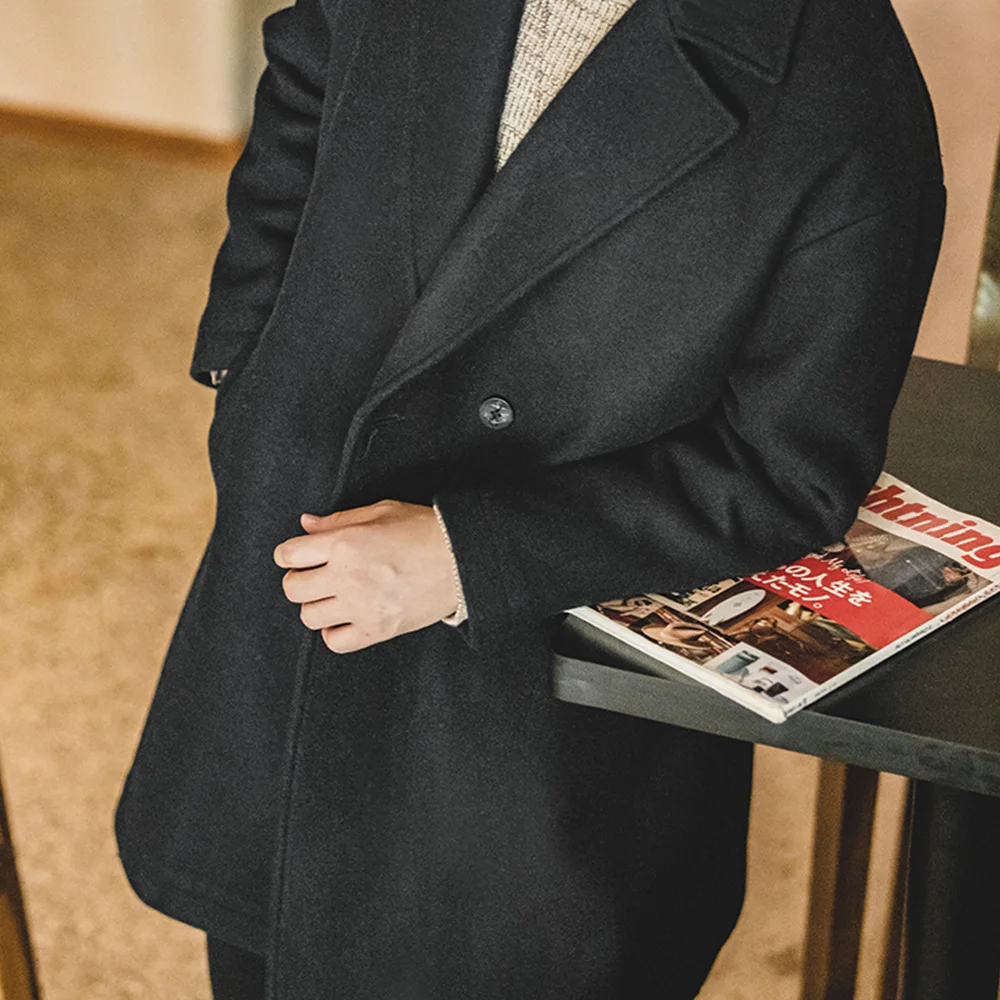
From a durability perspective, quality shearling jackets commonly remain functional for 10-20+ years with proper care. Synthetic alternatives typically last 3-5 years before significant degradation. This longevity difference dramatically affects the cost-per-wear calculation. A $1,500 shearling jacket worn for 15 years costs $100 per year, while a $300 synthetic jacket replaced every 3 years costs the same annually but creates more waste.
Environmental considerations present a complex balance. While shearling is a natural, biodegradable material, animal product concerns exist for some consumers. Synthetic alternatives avoid animal use but typically involve petroleum-based materials with their own environmental impacts and limited biodegradability. Recycled synthetic options represent an improving middle ground for those prioritizing both concerns.
Mens Heavy Winter Coat, Mens Insulated Coat, Mens Parka Coat
Price range: $175.52 through $237.36 Select options This product has multiple variants. The options may be chosen on the product pageMens Big and Tall Winter Coats, Mens Down Coat, Mens Hooded Winter Coat, Mens Puffer Coat
Price range: $126.44 through $217.01 Select options This product has multiple variants. The options may be chosen on the product pageMens Big and Tall Winter Coats, Mens Hooded Winter Coat
Price range: $80.32 through $106.68 Select options This product has multiple variants. The options may be chosen on the product pageMens Cashmere Overcoat, Mens Hooded Winter Coat, Mens Wool Blend Coat
Price range: $128.72 through $139.68 Select options This product has multiple variants. The options may be chosen on the product pageMens Hooded Winter Coat, Mens Insulated Coat, Mens Puffer Coat, Mens Quilted Coat
Price range: $139.88 through $177.72 Select options This product has multiple variants. The options may be chosen on the product pageMens Double Breasted Pea Coat, Mens Hooded Winter Coat, Mens Quilted Coat
Price range: $81.00 through $108.48 Select options This product has multiple variants. The options may be chosen on the product page
Can You Wear Shearling in the Rain? Water Resistance Facts
Shearling’s relationship with water presents one of the most common concerns for potential buyers. While not fully waterproof, properly finished shearling does offer moderate natural water resistance thanks to lanolin – the natural oil present in sheep’s wool.
This natural water resistance means light precipitation or brief exposure to snow generally poses little risk to your jacket. The leather exterior initially repels moisture, while the lanolin in the wool provides additional protection. However, this resistance has clear limitations. Prolonged exposure to heavy rain will eventually saturate the leather, potentially leading to stiffening when dried improperly.
To enhance your shearling’s natural protection, consider specialized products specifically designed for sheepskin. These treatments increase water resistance without compromising breathability or natural characteristics. Apply sparingly according to product instructions, as over-application can affect the leather’s appearance and the wool’s performance.
If your jacket does get caught in unexpected rain, proper drying technique becomes crucial. Allow it to dry naturally at room temperature away from direct heat sources. Never use hair dryers, radiators, or other artificial heat, which can cause the leather to crack or the wool to become brittle. Once completely dry, apply a specialized conditioner to restore moisture to the leather.
The most effective approach remains preventative. Check weather forecasts before choosing your outerwear and consider a hooded winter coat option for increased protection when precipitation is likely. With reasonable precautions, occasional exposure to moisture won’t compromise your shearling’s integrity or lifespan.
What to Check Before You Buy: A Pre-Purchase Checklist
Before making a significant investment in a shearling jacket, use this systematic checklist to ensure you’re selecting the right piece for your needs.
Personal needs assessment
– What weather conditions will you primarily wear this in?
– How formal or casual is your typical daily dress code?
– Which style aligns with both your wardrobe and typical activities?
– What color will integrate best with your existing clothing?Quality examination points
– Is the leather consistently supple without dry or stiff areas?
– Does the wool have even density and consistent coloration?
– Are the seams straight with tight, even stitching?
– Do zippers operate smoothly with substantial hardware?
– Is the weight appropriate for genuine shearling (noticeably substantial)?Fit verification
– Can you comfortably move your arms in all directions?
– Does the jacket close easily without pulling?
– Are the shoulders aligned with your natural shoulder line?
– Is the sleeve length appropriate (reaching your wrist bone)?
– Does the body length complement your frame and intended style?Value assessment
– How does the price compare to similar jackets from comparable brands?
– What warranty or guarantee does the manufacturer offer?
– What care requirements will affect long-term costs?
– How versatile is this jacket across different occasions in your life?
Understanding how shearling jackets work for everyday wear helps determine if your selection will truly meet your lifestyle needs. Consider how often you’ll realistically wear the jacket and in what contexts to ensure you’re choosing a style that maximizes utility and enjoyment of your investment.
Human-Made vs Animal Shearling: Ethical Considerations
The choice between genuine shearling and synthetic alternatives often extends beyond performance to include ethical considerations that matter to many consumers.
Ethically sourced genuine shearling typically comes from animals already part of the food production system, using hides that might otherwise become waste products. Responsible producers maintain transparent sourcing practices with standards for animal welfare and processing methods. This “full-use” approach represents efficient resource utilization within existing systems.
Environmental impacts present complex trade-offs. Natural shearling biodegrades at the end of its useful life, unlike most synthetic alternatives. The tanning process traditionally involved chemicals of environmental concern, though modern techniques have significantly reduced these impacts. The exceptional longevity of quality shearling means fewer replacement cycles and potentially less overall resource consumption compared to synthetic options that require replacement every few years.
Synthetic alternatives eliminate direct animal product use. Manufacturing technology continues to improve these materials’ performance, though significant gaps remain in temperature regulation, moisture management, and longevity. These products typically involve petroleum-derived materials with their own environmental considerations, including microplastic shedding during wear and washing, plus limited biodegradability.
The performance difference between natural and synthetic materials affects long-term consumption patterns. A single genuine shearling jacket might replace four or five synthetic alternatives over its lifespan, reducing overall resource use and waste generation despite the higher initial impact.
For many consumers, this decision ultimately comes down to personal values and priorities. Some prioritize avoiding animal products entirely, while others focus on overall environmental impact across the product’s full lifecycle. There’s validity in both approaches, with increasing options available at various points along this spectrum.
Why Metro Cloak’s Shearling Selection Stands Apart
Metro Cloak approaches men’s outerwear with dedicated focus and expertise, particularly evident in our shearling collection. Our curated selection represents the culmination of extensive material research and design refinement aimed at providing exceptional quality and enduring style.
Our experts evaluate each jacket design against stringent criteria for material quality, construction integrity, and design relevance. We select only premium shearling with consistent density, optimal thickness, and proper tanning that ensures both immediate comfort and long-term performance. This specialized knowledge allows us to offer jackets that truly deliver on shearling’s natural benefits.
The design philosophy balances respect for heritage silhouettes with subtle contemporary refinements. Classic proportions receive thoughtful updates that maintain authenticity while ensuring modern relevance. This approach creates pieces that transcend trends to become wardrobe foundations rather than seasonal purchases.
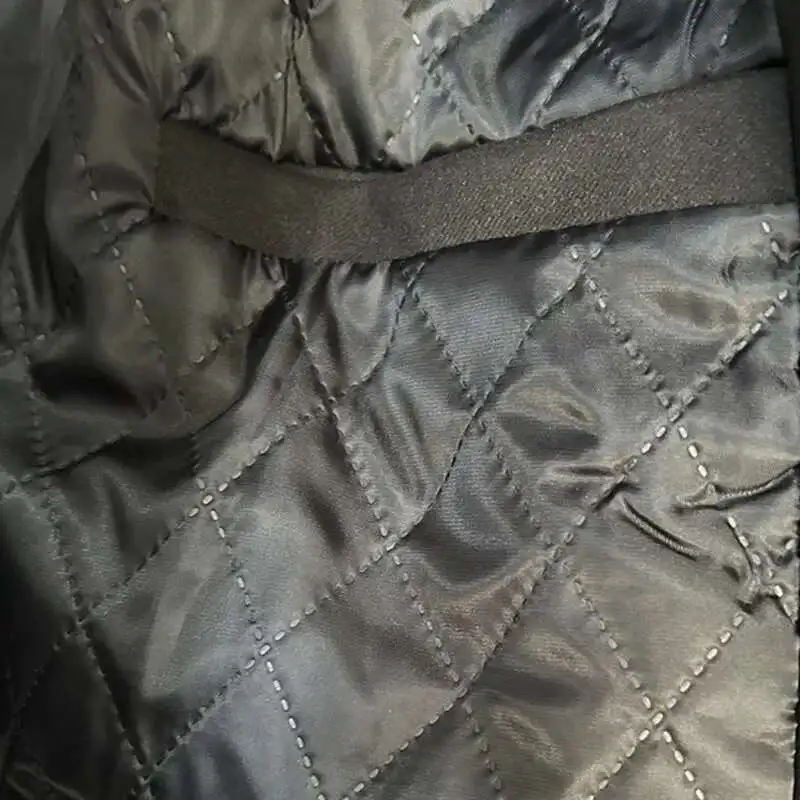
Our quality control standards exceed industry norms through multi-point inspection protocols. Each jacket undergoes scrutiny for stitching consistency, panel matching, hardware functionality, and finish quality. This attention to detail ensures that when you select a jacket from our brown leather coat collection or any other line, you receive a piece that meets exceptional standards.
This commitment to quality creates confidence in your purchase. We believe outerwear should perform as impressively as it looks, providing reliable protection and comfort through years of wear. This philosophy informs every aspect of our collection, from material selection to final construction details.



